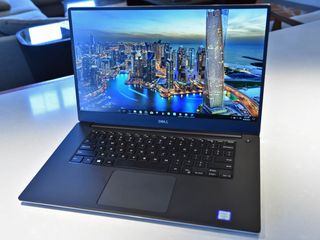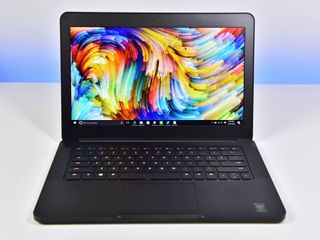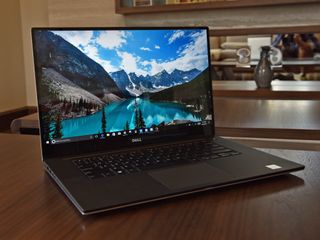
Dell and Razer recently refreshed two of their laptops — the XPS 15 and the Blade 1060 — that are similar in size, appearance, and performance. If you've been waiting to upgrade your old laptop to something new and have one or both of these laptops in your sights, you're probably wondering which one is best. This is a showdown!

Specifications
The best way to get a quick look at the differences between two laptops is to compare their specs. For this comparison, we will disregard the Core i3 XPS 15 configuration as it doesn't have a GTX 1050 and doesn't exactly hold up.
| Category | Razer Blade 1060 | Dell XPS 15 |
|---|---|---|
| Processor | 6th-generation Intel Core i7-6700HQ 2.60GHz Quad-core | 7th-generation Intel Core i5/i7 2.50/2.80GHz Quad-core |
| Display size | 14-inches | 15.6 inches |
| Display resolution | 1080p non-touch 1800p touch | 1080p non-touch 4K touch |
| RAM | 16GB DDR4 2133MHz | 8/16/32GB DDR4 2400MHz |
| Graphics | NVIDIA GTX 1060 6GB GDDR5 VRAM | NVIDIA GTX 1050 4GB GDDR5 VRAM |
| Storage | 256/512/1TB PCIe SSD | 1TB HDD + 32GB SSD 256/512GB, 1TB PCIe SSD |
| Battery | 70WHr | 56/97WHr |
| Wireless | Killer 1535 802.11ac Bluetooth 4.1 | Killer 1535 802.11ac Bluetooth 4.1 |
| Dimensions | 13.60 x 9.30 x 0.70in (345 x 236 x 17.8mm) | 14.06 x 9.27 x0.45-0.66in (357 x 235 x 11-17mm) |
| Weight | 4.16lbs (1.89kg) Full HD 4.30lbs (1.95kg) QHD+ | 4lbs (1.8kg) FHD 4.4lbs (2kg) 4K |
| Ports | 3x USB 3.0 HDMI 2.0 USB-C Thunderbolt 3 3.5mm jack | 2x USB 3.0 SD card HDMI 1.4 USB-C Thunderbolt 3 3.5mm jack |
| Price | from $1999 | from about $1199 |
When it comes to the physical size of each of these laptops, the difference is minuscule. The XPS 15 does have a display that is larger by about 1.6 inches, but thanks to Dell's engineering wizardry, there is only about a 0.40-inch width difference in the chassis. Both laptops also weigh about the same amount, which is a big deal when you consider you're getting a 4K display and a larger battery in the XPS 15.
If you're shopping for either of these laptops, you're probably not as concerned with the size and weight as you are with the performance — each of these laptops boasts some impressive hardware.
NVIDIA GTX 1060 vs GTX 1050

For many of you, the deciding factor between these two laptops will come down to the graphics card. The Razer Blade's NVIDIA GTX 1060 has 6GB of GDDR5 VRAM, comes VR-Ready, and will run all current games on high settings without a hitch.
To be more precise, the GTX 1060 has twice as many CUDA cores, twice as many texture units, a larger memory bandwidth, and 2GB of extra VRAM. If gaming power is really what you're looking for, it will be the Razer Blade you want to go with.
Get the Windows Central Newsletter
All the latest news, reviews, and guides for Windows and Xbox diehards.
On the other hand, if you don't plan on using your laptop for intense gaming or for VR, the Dell XPS 15 is probably a better choice due to its significantly lower price. You can get a configuration with an NVIDIA GTX 1050 for about $1200 — this will do you well if you plan on using your laptop for photography, and will still be suitable for medium gaming.
Processor, RAM, and Thunderbolt 3
The XPS 15 is sporting the newer, 7th-generation Kaby Lake processors from Intel, but you won't find much of a difference when it comes to performance. Where you will see a difference, however, is in energy consumption. If you're someone who has to squeeze every last bit of juice out of their battery — travelers and those who work in the field — the XPS 15 will be the better choice. This is especially true when you consider the larger, 97WHr battery option that comes with 4K configurations.
When it comes to RAM, the XPS 15 also has the Razer Blade beat if you're looking for more than 16GB. You can grab 32GB of RAM straight from Dell, or, if you want to save a few bucks, you can grab less at checkout and add more later on your own. The RAM in the Razer Blade is not upgradeable.

Some of you have likely noted the difference between the Thunderbolt 3 port on the Razer Blade and the XPS 15, which might be a deal breaker if you plan on running external PCIe devices. The Dell XPS 15's Thunderbolt 3 port has x2 PCIe lanes, while the Razer Blade's port has x4 PCIe lanes.
This difference likely won't matter for the majority of people, but it's still important to note. To put it simply, if you plan on running an external GPU, you'll probably want to go for the Razer Blade.
Display
One of the biggest advantages the Dell XPS 15 has going for it is the 15.6-inch, 4K touch display. Whether it's for editing or photography purposes, if you have your heart set on a 4K display, your obvious choice here is the XPS 15. Keep in mind that the overall size difference between the two laptops is minimal, so going for the bigger, higher-res screen won't really affect the mobility of your device.

The Razer Blade's touch option goes up to 1800p, which, for gaming, is pushing the resolution limits when paired with the GTX 1060 graphics card. Any higher, i.e. 4K, and you'll be forced to lower in-game video settings to a point where it's unplayable. If you want the absolute best gaming performance, grab the Blade with the 1080p display.
Price
If the graphics card wasn't the deciding factor between these two laptops, it will probably come down to the price. To start, it's worth mentioning that XPS 15 configurations with an NVIDIA GTX 1050 GPU and a 1080p display start at about $1200. If you want the absolute cheapest laptop, go with the XPS 15.
When we start to match specs between the two laptops, the price difference becomes evident. A Razer Blade with an Intel Core i7 CPU, 1800p touch display, 16GB of RAM, and a 512GB SSD costs about $2300. A similar XPS 15, with an Intel Core i7 CPU, 1080p display, 16GB of RAM, and a 512GB SSD costs about $1700 — that's a price difference of about $600.
If money is no option and you want to game or use VR with your laptop, it has to be the Razer Blade. If you'd like to spend less on a more conventional ultrabook that can still power some medium gaming and is good for multimedia editing, the XPS 15 is the better choice.
TL;DR


If you want a quick answer as to which laptop to buy, it's best to pinpoint exactly what you're using the laptop for. If you're going to be primarily gaming on your laptop or you want a laptop for VR, grab the Razer Blade. Its NVIDIA GTX 1060 graphics card offers considerably better gaming performance than the GTX 1050 found in the XPS 15.
On the other hand, if you'd like a more traditional ultrabook that can be used for photography and multimedia editing, the XPS 15 is the better option thanks to its larger, 4K display. Don't forget; the GTX 1050 GPU isn't exactly a slouch when it comes to mid-level gaming — it's just that the GTX 1060 beats it.
Want a second opinion? Check out Daniel Rubino's review of the Razer Blade. A review of the XPS 15 is coming at a later date.

Cale Hunt brings to Windows Central more than eight years of experience writing about laptops, PCs, accessories, games, and beyond. If it runs Windows or in some way complements the hardware, there’s a good chance he knows about it, has written about it, or is already busy testing it.